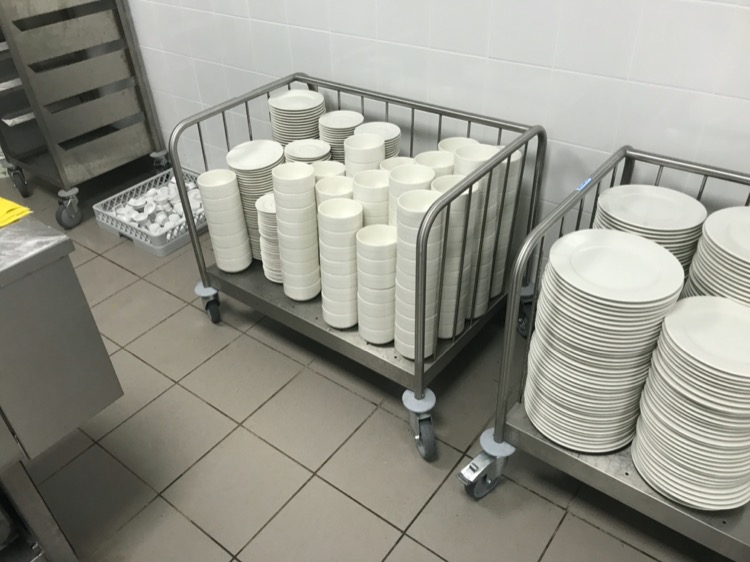Schleifspuren
Scratches as grinding marks due to mechanical load

A point of contention between customer and supplier is often scratch-like marks in the upper area of the glazes, primarily on flat pieces such as plates and platters. Such glaze damage often occurs as a result of incorrect or improper handling during rinsing and stacking.
It is true that hotel porcelain and catering tableware are much more resistant to mechanical pressure than conventional household porcelain, but even hotel porcelain is not infinitely resilient. Especially if the mechanical pressure is increased by friction.
In many places, porcelain is stacked almost thoughtlessly and carelessly, and an item is often loaded with 20 to 50 times its own weight. A stack of 20 pizza plates, for example, already weighs 26 to 30 kg. If such weights are then pushed back and forth on a plate or platter, scratches will almost always form - and with all manufacturers. It is certainly a question of the quality of the glaze and the firing temperature - i.e. invisible to the layman - whether and to what extent these friction scratches become visible and destroy the porcelain in the long term. The visual perception of such scratches and abrasion marks is particularly enhanced by dark coloured glazes. This is most clearly visible with black glazes. Please bear this principle in mind:
Porcelain is harder than cutlery, but not harder than itself!
Prevention of grinding marks due to mechanical load
The stability of a glaze in terms of its susceptibility to scratches and grinding marks as a result of mechanical stress is determined by a number of factors relating to its intended use. Here are some tips on this:
- Always place plates and platters on a stack from the top and never push them sideways.
- Reduce the clearance heights (distances between shelves) in kitchen and warming cabinets.
- Set stacking heights (number of plates) to suit the porcelain.
- For dark-coloured glazes, place a cloth or tile between heavy plates and plates in stacks.
- Store heavy plates and platters vertically in racks and plate holders.
Pay attention to the water quality.
- Quartz, limescale, salts and other residues from the rinsing water act like sandpaper.
- Change the water in your dishwasher tank regularly.
- After rinsing, wipe the floors briefly with a dry cloth.
- The glazes on heated crockery are much more sensitive immediately after washing than when cold.
- The thicker the body, the greater the storage capacity for drying heat.
- Never stack hot crockery directly after the dishwasher has finished drying.
- Wait until the crockery has cooled down before putting it away.
Use these 3 basic rules to avoid scratching and chipping the glazes. Such a defect is not recognised by any manufacturer.
